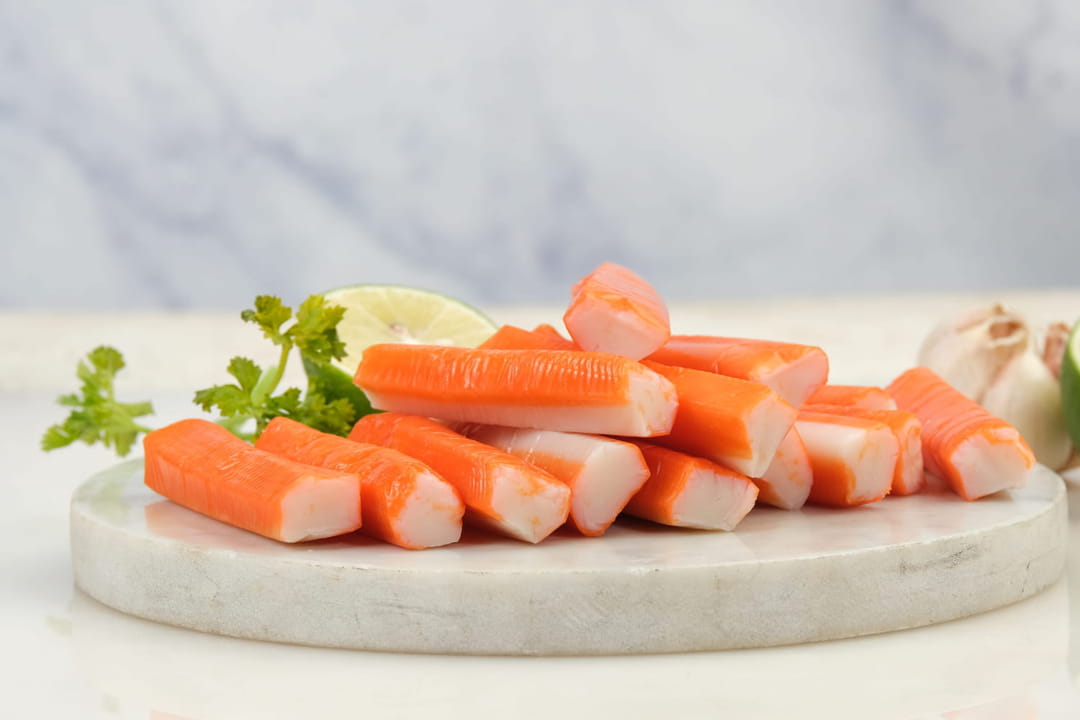What are the main ingredients of surimi? You may be very surprised when you discover its composition.
France is the second largest consumer of surimi in the world after Japan. But if for the inhabitants of the Land of the Rising Sun, the food has kept its original meaning, literally “chopped or folded fish flesh”, for us, the term surimi no longer really refers to this ancient preparation. 400 years old. Originally, surimi is in fact a dish made from white fish, egg, sugar, salt and soy sauce. But strangely, the recipe will not have stood the test of time and especially the passage from Japan to France.
Today the composition of surimi is quite different and looking at the label of many batches, it becomes difficult to call them crab or fish sticks. So why is it so popular with the French? Because it is seen by many as a slimming ally, a small snack good for health, or because it allows you to eat fish… without eating fish. According to Dr. Dukan, surimi is a “low-fat” product […] and sugar” and “like all products rich in protein, it is particularly satiating”, he explains in an article in Top Health.

However, in most of the sticks adored by more than one, there is no trace of seafood and very little fish. By inspecting the composition of the surimi manufactured by most brands, such as Cora or Fleury Michon, we can see that no industrial surimi is composed essentially or even half of fish. The fault of one standard French which authorizes manufacturers to put only 30% fish flesh in the surimi recipe. Some brands, like Fleury Michon, include 43% fish, but that is already very high for this type of product.
The rest ? Egg white, water, starch, sugar, salt, additives and colorings. Of course it is often made with good leftover fish: Alaskan pollock, blue whiting, hake, and only the flesh is used, but 30% of fish in a 25 gram stick is not much, especially if the The consumption argument is its protein intake.
A little white fish and no seafood… But where does the color of surimi come from and especially its taste? For the cheapest products, the paprika color is obtained using colorings and the flavors come from additives obtained from shellfish waste.
Because yes, surimi is an ultra-processed product, made by pressing the fish mixture before steaming it. Gold Inserm alert on the health risks of consuming this type of product. Especially since it is a food that is too salty, around 1.5 grams per 100 grams, while the daily limit recommended by WHO is 5 grams. Added to the fact that it provides little protein (less than 10 grams per 100 grams), compared to a piece of fish (20 grams per 100 grams), and due to its composition based on white fish, it is very poor in omega-3, mainly present in fatty fish such as salmon or sardines.
